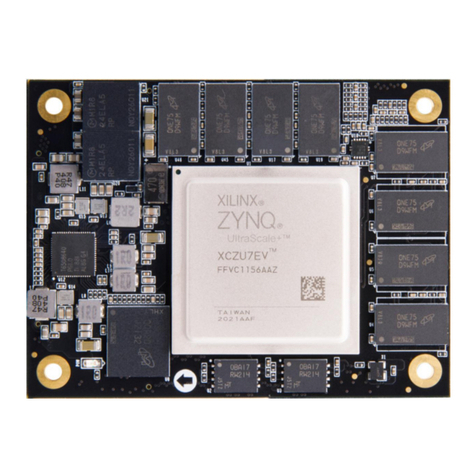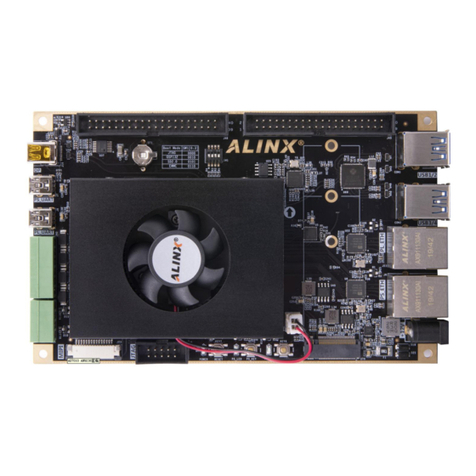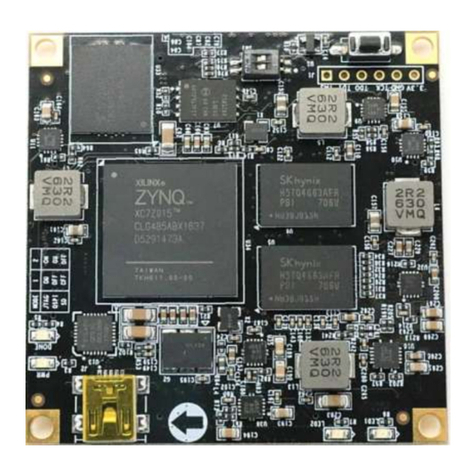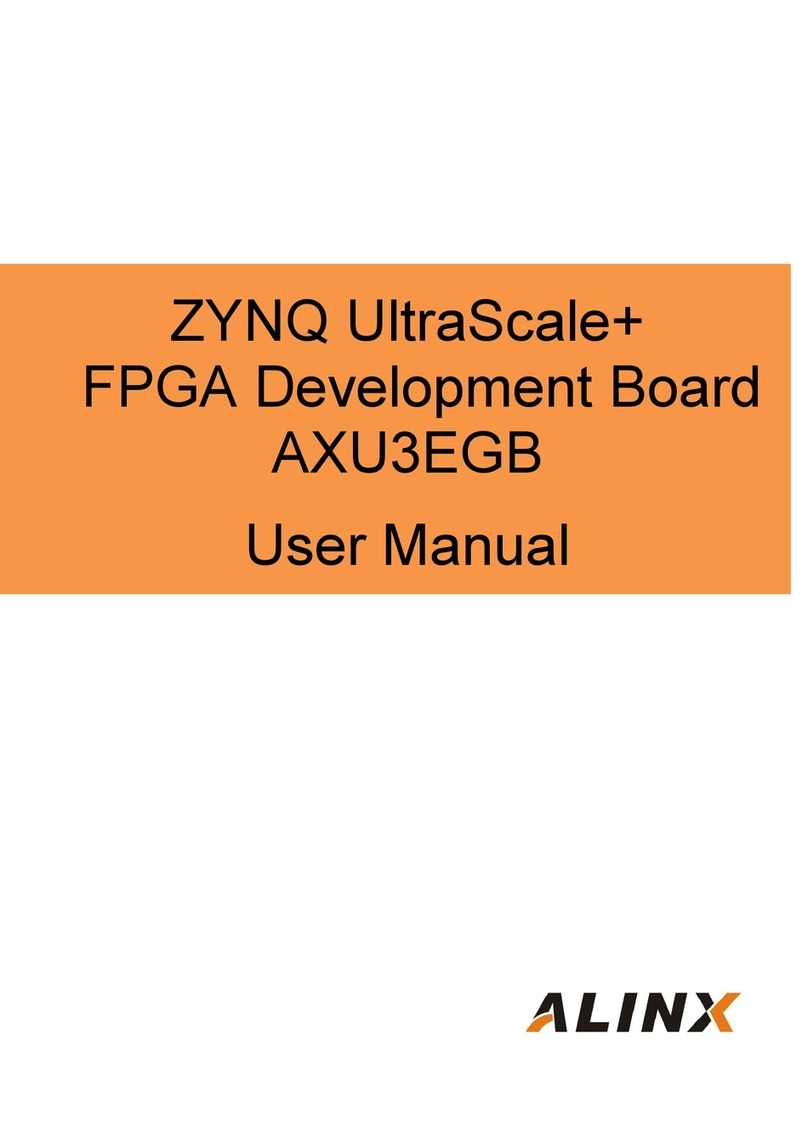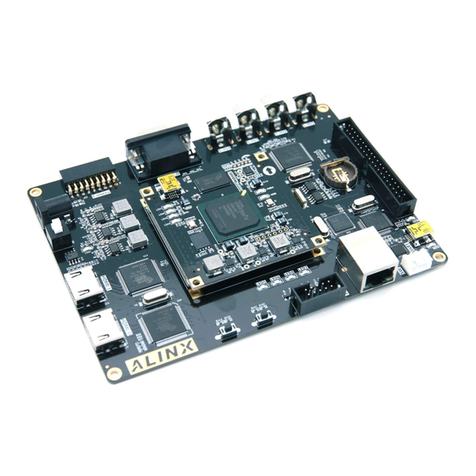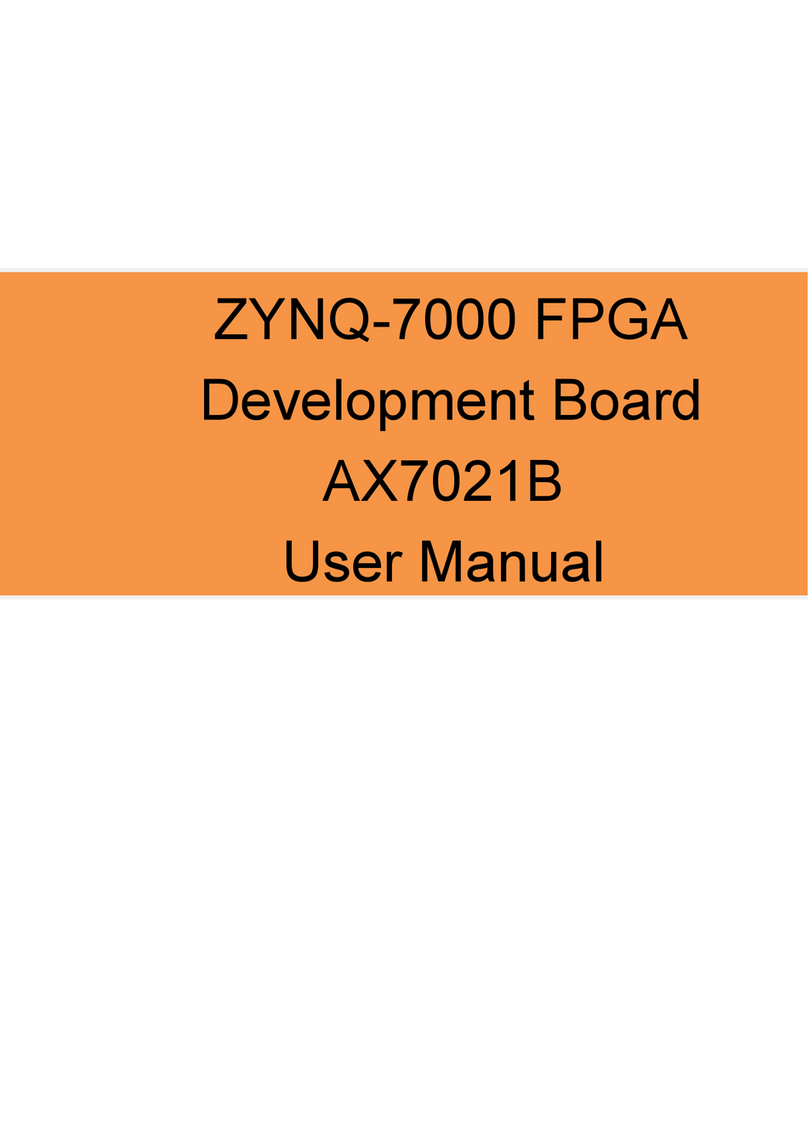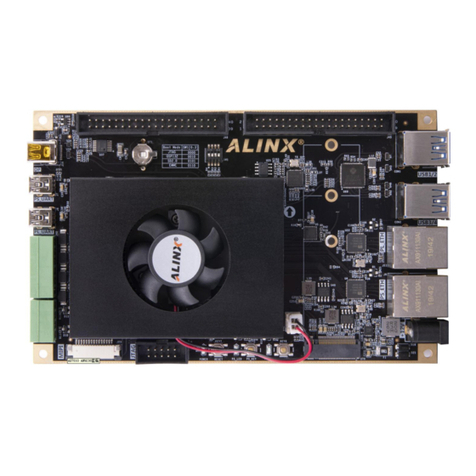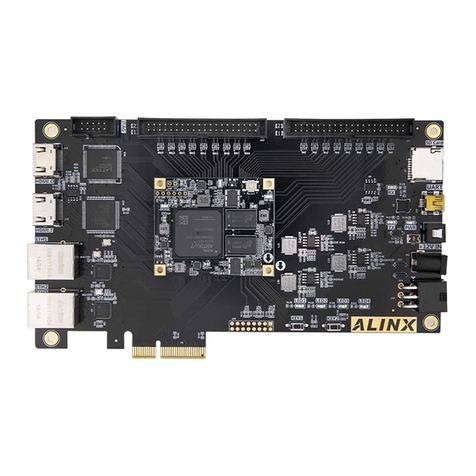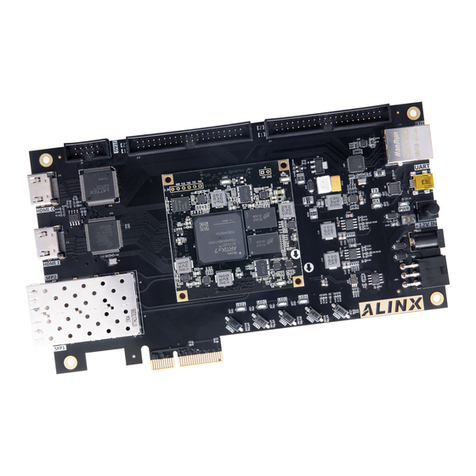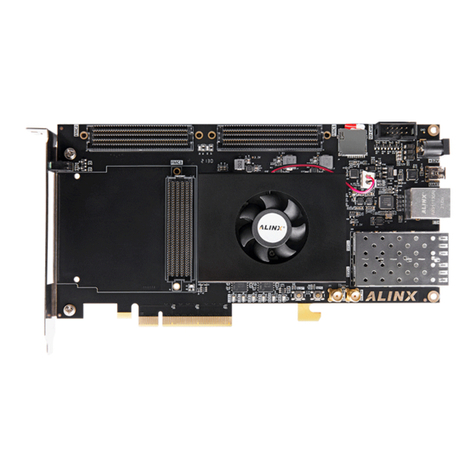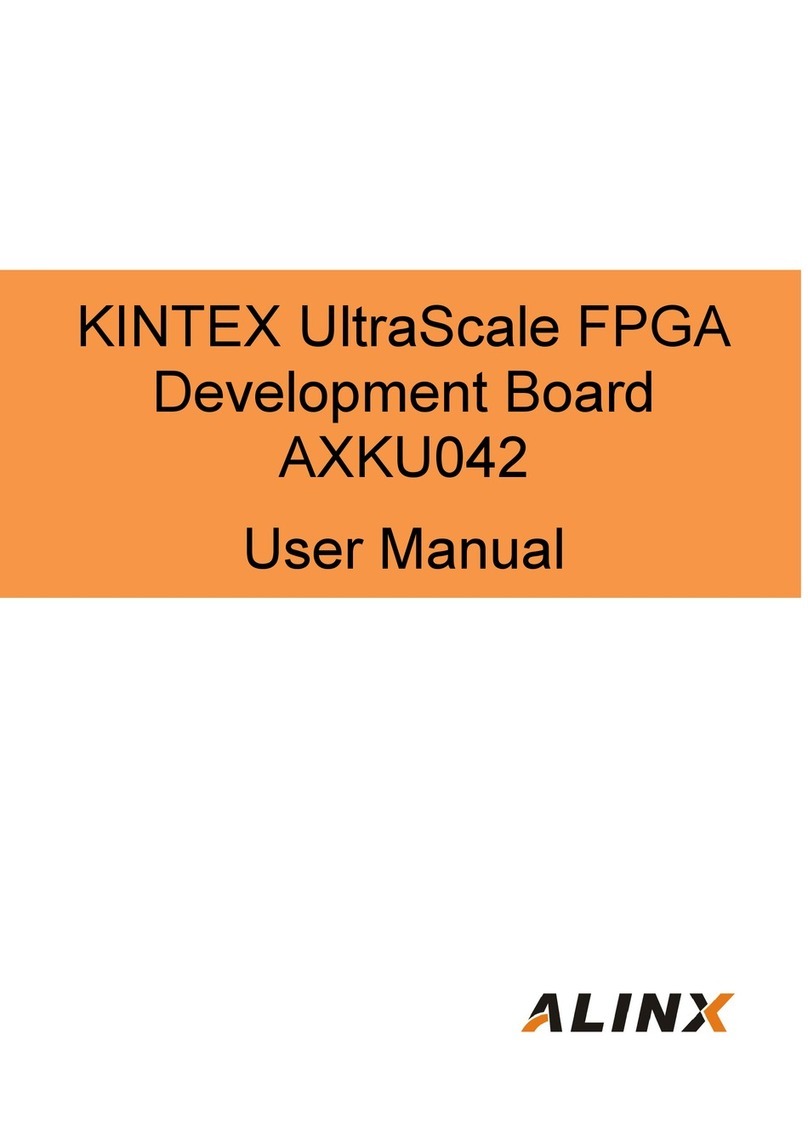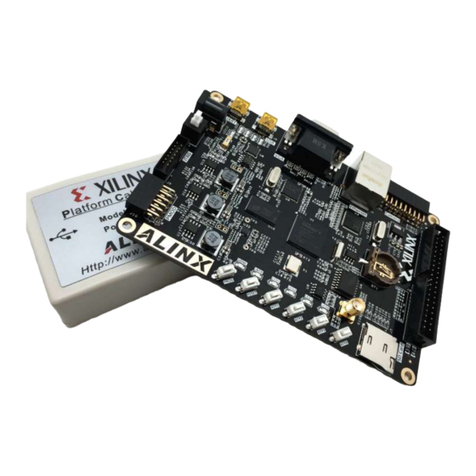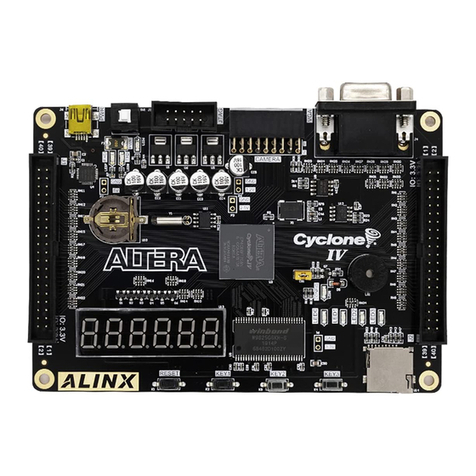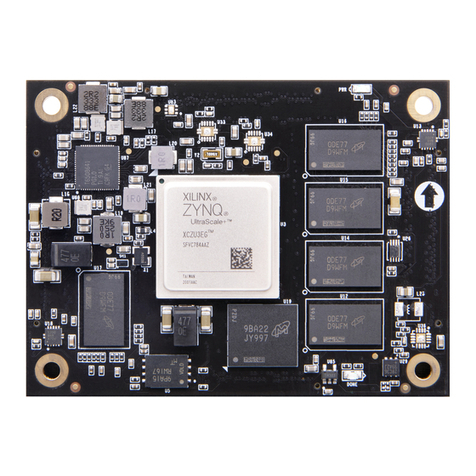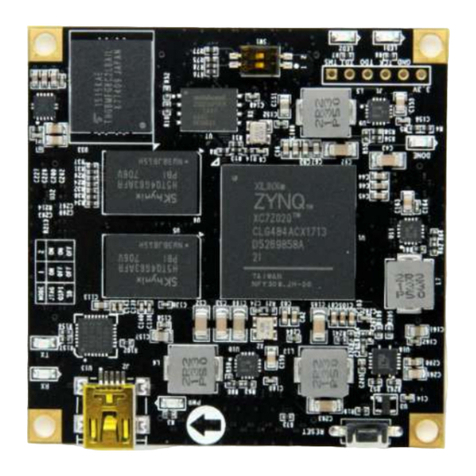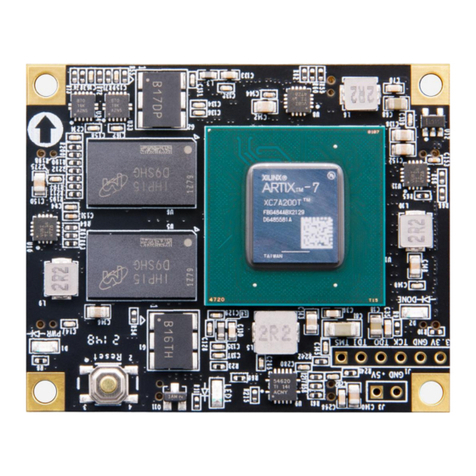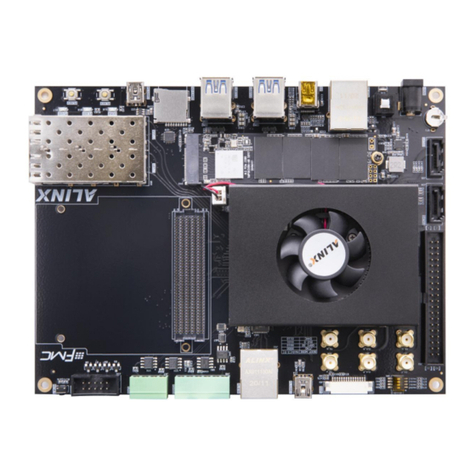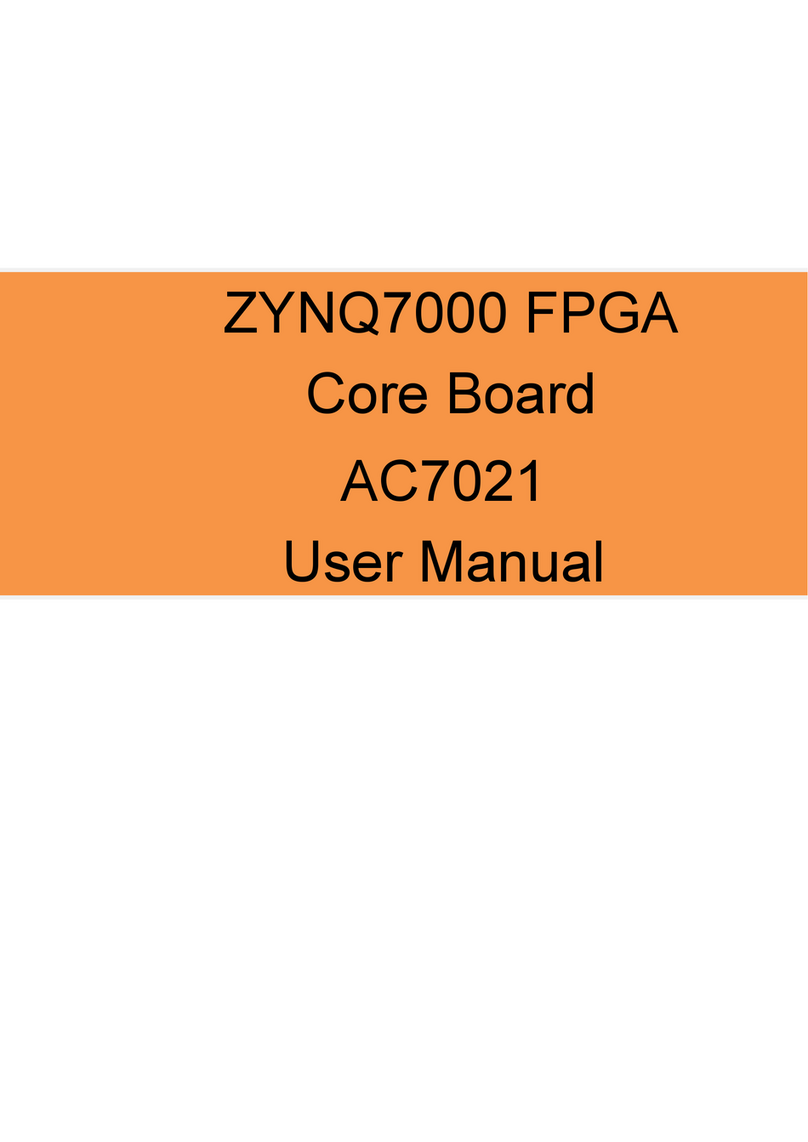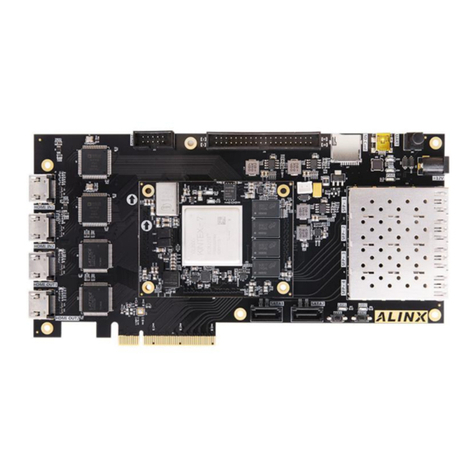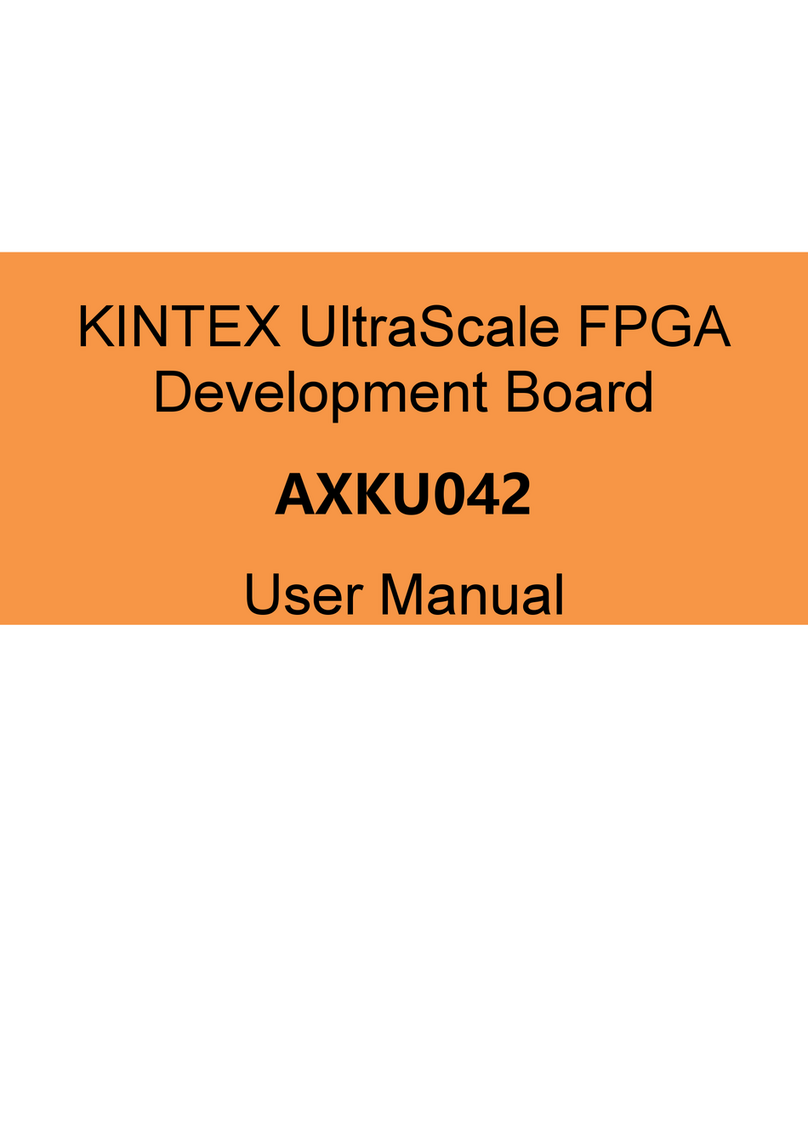
3 / 52
Cyclone IV FPGA Development Board AX515 User Manual
Table of Contents
Part 1: FPGA Development Board Introduction.......................................... 5
Part 2: Structure Diagram........................................................................... 8
Part 3: Power.............................................................................................. 9
Part 4: FPGA Chip.....................................................................................11
Part 4.1: FPGA resources ..............................................12
Part 4.2: JTAG Interface.................................................12
Part 4.3: FPGA Power Supply........................................13
Part 5: 50Mhz Clock ................................................................................. 14
Part 6: SPI Flash Configuration chip ........................................................ 15
Part 7: QSPI Flash.................................................................................... 17
Part 8: DDR2 DRAM................................................................................. 19
Part 9: EEPROM 24LC04......................................................................... 23
Part 10:Real-Time Clock........................................................................... 24
Part 11: Gigabit Ethernet Interface ........................................................... 26
Part 12: USB to Serial Port....................................................................... 29
Part 13: VGA Port..................................................................................... 31
Part 14: USB 2.0 interface........................................................................ 33
Part 15: Audio Interface............................................................................ 36
Part 16: SD Card Slot............................................................................... 37
Part 17: Expansion Header ...................................................................... 39
Part 17.1: Expansion header J1.....................................40
Part 17.2: Expansion header J2.....................................42
Part 17.3: Expansion header J3.....................................46
Part 18: LED............................................................................................. 47
Part 19: Buttons........................................................................................ 48
